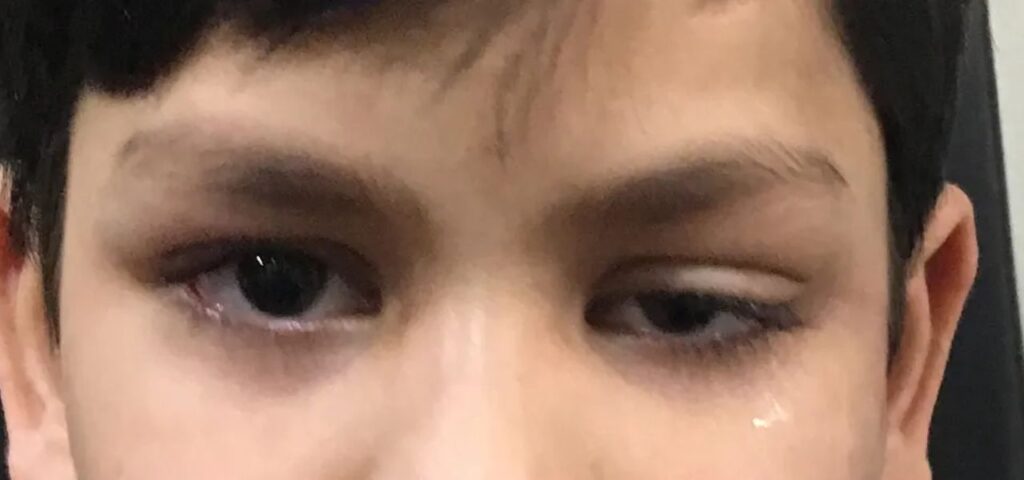Ptosis | Drooping of the Eyelid

Ptosis means drooping of the upper eyelid. It can be mild and hardly noticeable or it can be severe and cover the pupil, making it hard to see. Most of the time, ptosis happens because the muscle that lifts the eyelid becomes weak.
Ptosis can affect one eye or both eyes. It may be present from birth (congenital) or develop later in life (acquired).
Ptosis in Children
When ptosis is present from birth, it is called congenital ptosis. Sometimes the eyelid moves when the child opens their mouth.
To correct it, doctors usually strengthen the weak eyelid muscle through surgery. If the muscle is very weak, doctors may use a sling. The sling can be made of artificial material or tissue taken from the child’s own thigh.
Ptosis in Adults
In adults, ptosis often happens because of aging. With age, the eyelid muscle may weaken or detach from its normal place.
If ptosis becomes severe, it can block vision. Surgery can fix this by reattaching the eyelid muscle. Before surgery, the eye doctor will check carefully to make sure there is no neurological disease causing the problem.
Causes of Ptosis
- Weakness of the eyelid lifting muscle
- Problems with the nerves that control the eyelid
- Eye injuries or previous eye surgery
- Age related changes in the eyelid muscle
- Neurological conditions (less common)
Symptoms of Ptosis
- Drooping of one or both eyelids
- Difficulty keeping the eyes fully open
- Needing to tilt the head back to see better
- Eye strain or tiredness, especially while reading
- In children, vision problems due to blocked sight
Treatment Options
In children, surgery strengthens the eyelid muscle or uses a sling made of artificial material or thigh tissue. In adults, surgery usually reattaches or tightens the eyelid muscle. Doctors first check for neurological causes before treatment.


